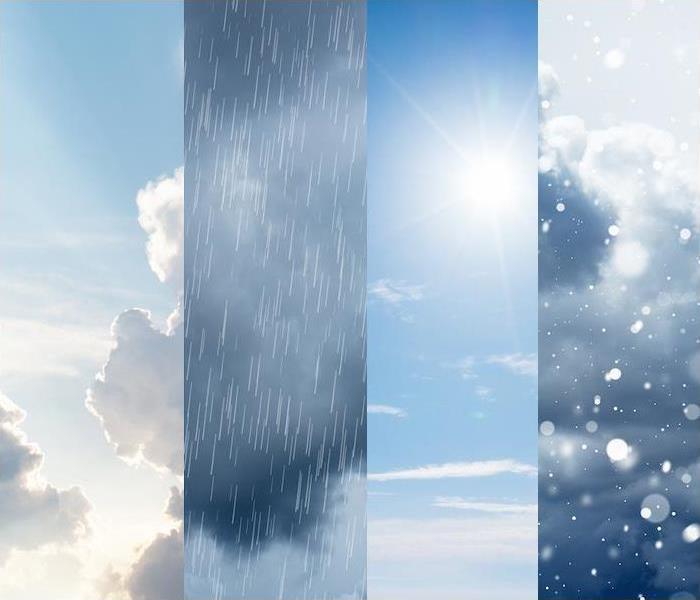What Will Spring Weather Bring? | SERVPRO® of Hyde Park/Roslindale
3/4/2022 (Permalink)
 Extreme temperature changes can lead to severe weather. SERVPRO of Hyde Park/Roslindale is here if you experience any damage.
Extreme temperature changes can lead to severe weather. SERVPRO of Hyde Park/Roslindale is here if you experience any damage.
The United States comes in at a close second as one of the largest countries with only Russia and Canada being larger!
Because our country is so large, that means that seasonal weather can look a lot different depending on where you are. With our nation being so spread out, it can create different weather patterns for certain areas, which in turn creates different weather threats.
As the spring season is drawing near, it means that the cold and warm air masses will collide, causing weather hazards. With the official start of spring on March 20 quickly approaching, let’s take some time to review the weather:
Let’s get started on our first region, the Pacific Northwest. This region will experience heavy rains during the spring months, which can cause flooding or water damage. The higher elevations also might have to worry with flooding, but from melting snow or ice, which clearly can cause problems of its own.
Moving to the Upper Midwest and Northeast regions, these areas are still experiencing winter weather. In fact, this region is likely to still be dealing with snowstorms or blizzards until late spring or early summer. We’re intimately acquainted with this weather pattern! While the arrival of spring might bring a little more warmth, we usually don’t fully warm up until summer.
As we move on to the West Coast, this region is experiencing opposite of what we see here. On the West Coast, they may be faced with excessive heat waves. When temperatures get intensely high and the air remains dry, it puts the area at risk of wildfires and also endangers people.
The middle part of the United States, from Iowa down to Texas, has drier air, but it’s very windy! This region has to prepare for windstorms, derechos and wildfires. Part of the Midwest is also home to what’s known as “Tornado Alley,” where tornadoes are incredibly common.
Last but certainly not least, we have the Southeast region, which can experience severe weather hazards during the spring. Intense thunderstorms and even tornadoes are common in the South this time of year, and states along the coast also have to keep an eye out for early-season hurricanes.
So, as you can see, with the United States being so large and spread out, weather patterns can look extremely different. That’s why you must always stay prepared and aware about what is going on in your area!
If extreme weather leaves you with damage from water, fire or other elements, help is a click away. Contact SERVPRO for fast, expert recovery.






 24/7 Emergency Service
24/7 Emergency Service